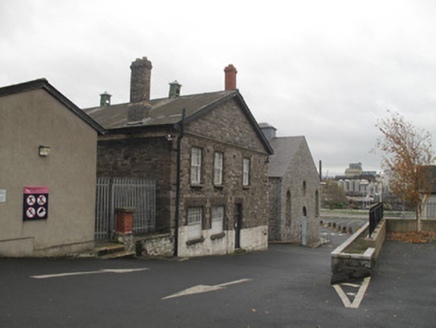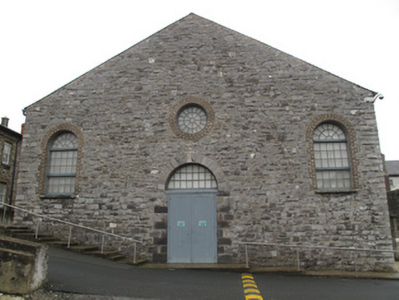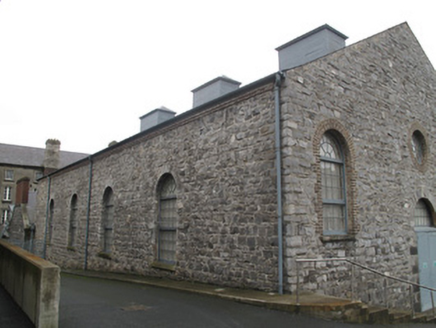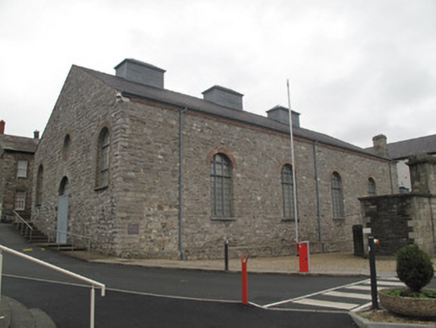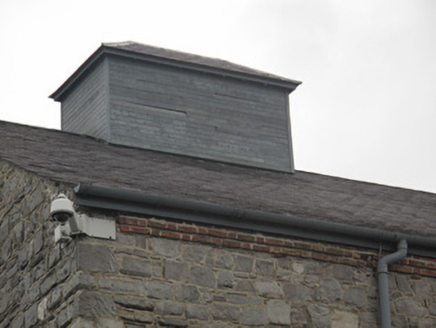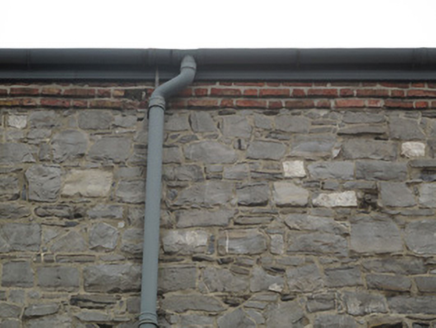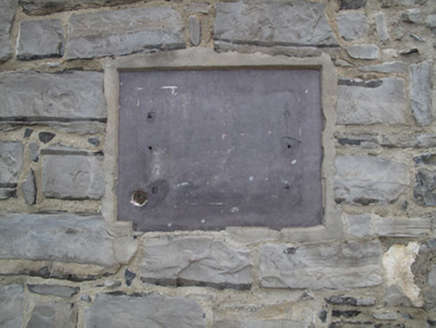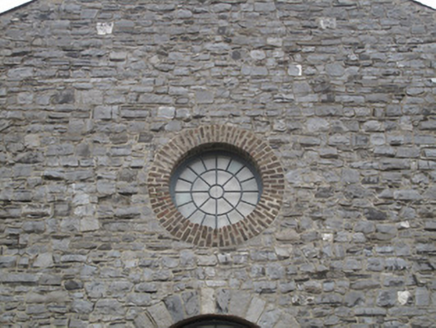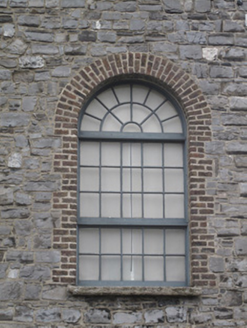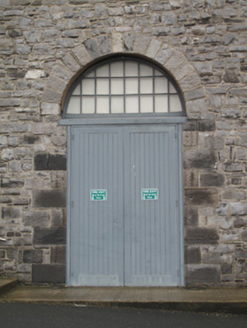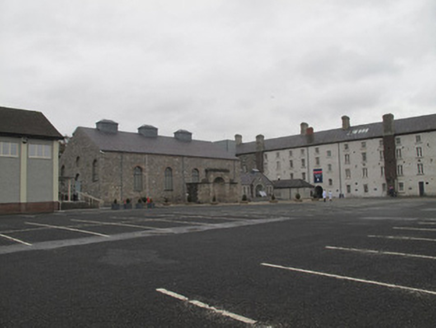Survey Data
Reg No
50070156
Rating
Regional
Categories of Special Interest
Architectural, Historical, Social, Technical
Previous Name
Royal Barracks
Original Use
Church/chapel
Historical Use
Sports hall/centre/gymnasium
In Use As
Museum/gallery
Date
1740 - 1760
Coordinates
314118, 234548
Date Recorded
10/11/2012
Date Updated
--/--/--
Description
Attached double-height gable-fronted former chapel, built c.1750. Later in use as riding school, now in use as museum building. Pitched slate roof with timber lanterns with hipped slate roofs to ridge, cast-iron rainwater goods, red brick eaves course. Roughly dressed calp limestone walls, plinth course. Plaque to south elevation removed, recess visible. Oculus to front (west) gable having red brick surround, timber framed spoked window. Round-headed window openings with red brick surrounds, stone sills and fifteen-over-ten pane timber sash windows having integral fanlights to north and west elevation, timber framed windows to south elevation. Calp limestone voussoirs to openings to north elevation. Round-headed door opening to front, calp limestone voussoirs and surrounds, double-leaf timber battened door and glazed small-paned overlight.
Appraisal
Designed by Arthur Jones Nevill in 1747, this building was initially intended as a regimental chapel for the Royal Barracks, and forms part of a related group of structures, originally designed for military use. The wide placement of windows to the front implies that it was intended to incorporate a gallery to the rear, and the creation of a single-volume space to the interior was permitted by roof trusses with a broad span of 59ft, which adds technical interest to the building. It was later employed as an indoor riding arena, an important building in what was primarily a cavalry barracks, where equitation was a key skill, and underwent some adjustments when it was later adapted for use as a mess hall in 1885. Composed of predominantly large, imposing buildings and prominently sited at a height overlooking the river, the Royal Barracks complex makes an enduring impression on the cityscape and has played a considerable role in the political development of Dublin and, indeed, the country as a whole.
